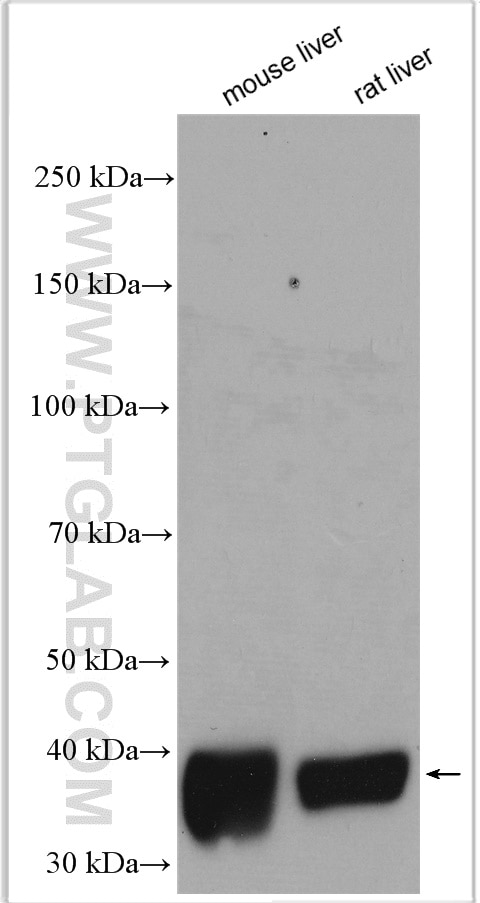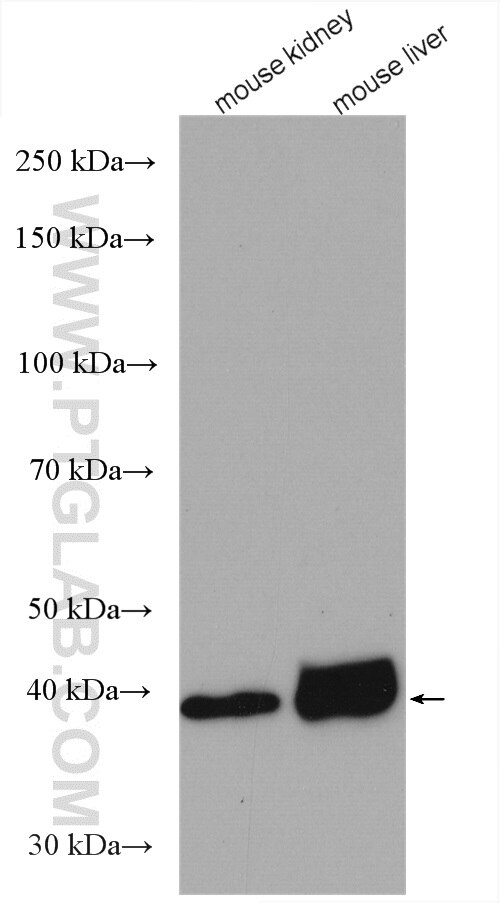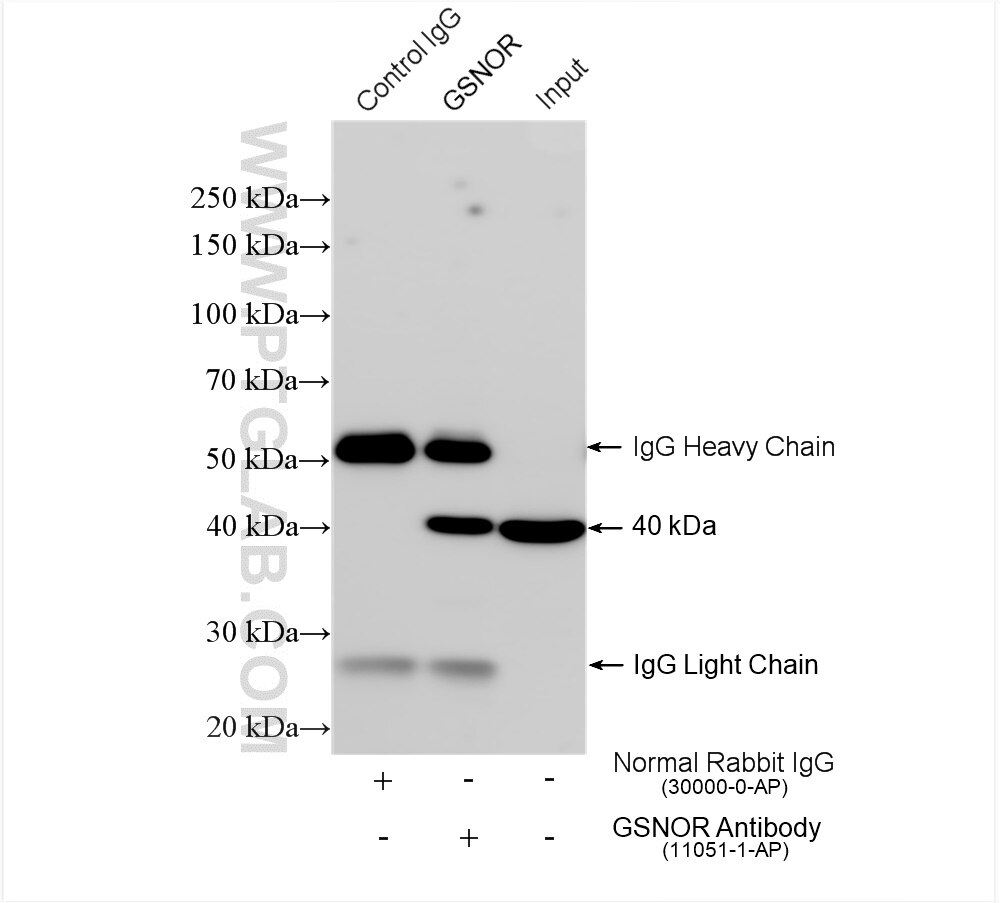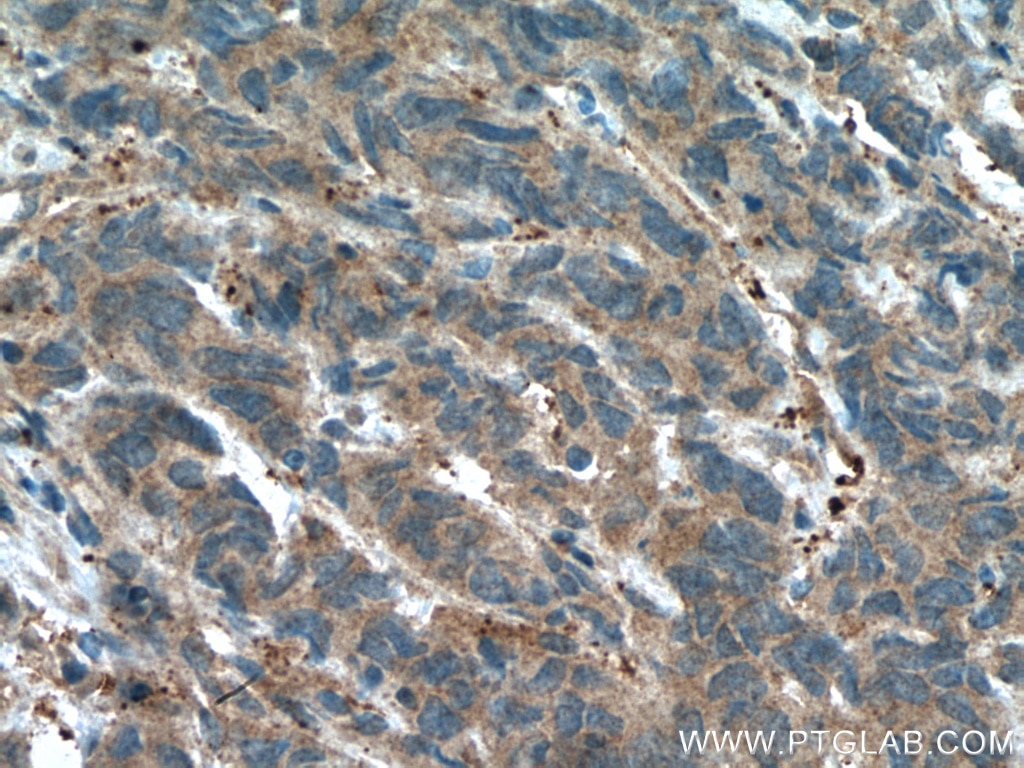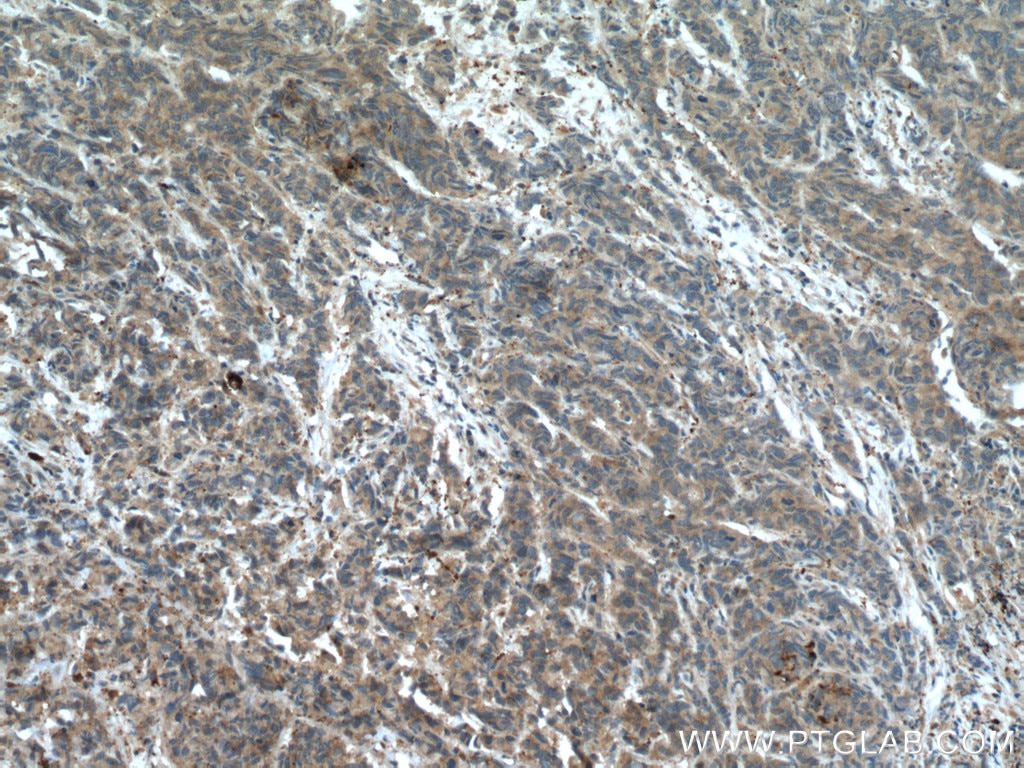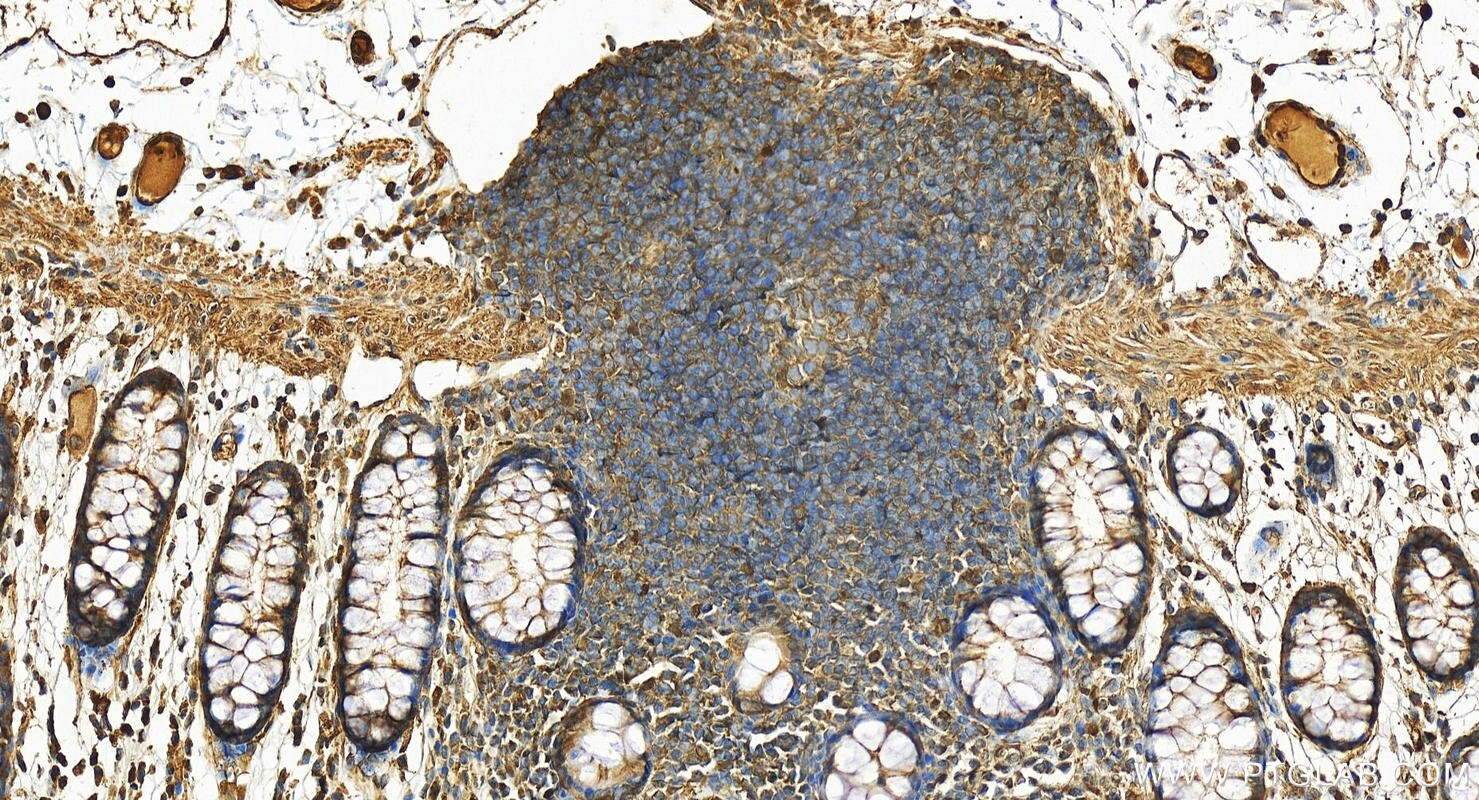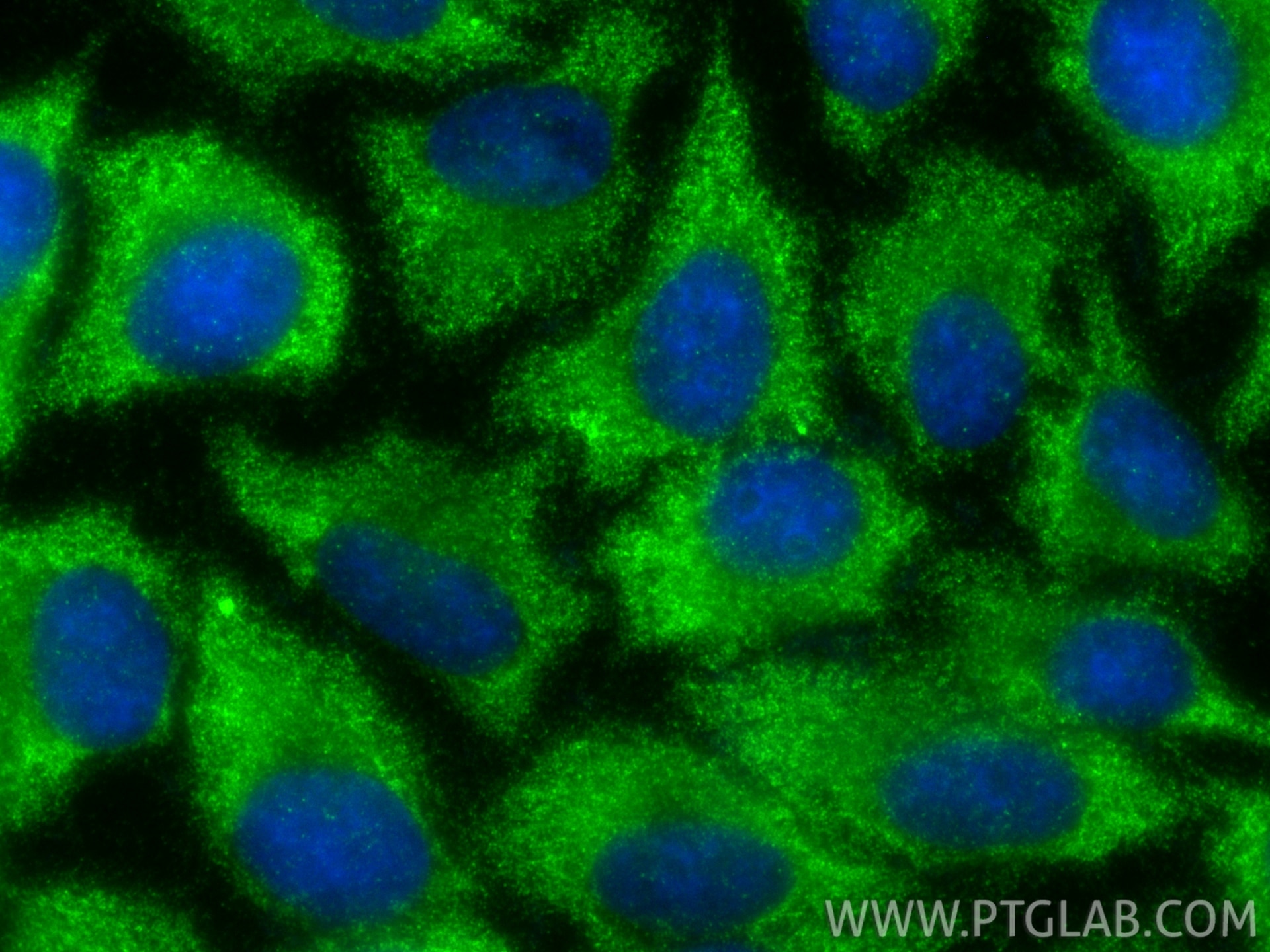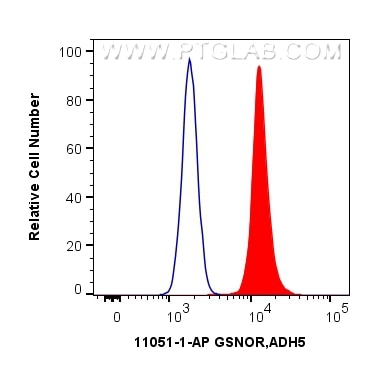Validation Data Gallery
Tested Applications
| Positive WB detected in | mouse liver tissue, rat liver tissue, mouse kidney tissue |
| Positive IP detected in | mouse liver tissue |
| Positive IHC detected in | human prostate cancer tissue, human colon tissue Note: suggested antigen retrieval with TE buffer pH 9.0; (*) Alternatively, antigen retrieval may be performed with citrate buffer pH 6.0 |
| Positive IF/ICC detected in | HepG2 cells |
| Positive FC (Intra) detected in | K-562 cells |
Recommended dilution
| Application | Dilution |
|---|---|
| Western Blot (WB) | WB : 1:1000-1:8000 |
| Immunoprecipitation (IP) | IP : 0.5-4.0 ug for 1.0-3.0 mg of total protein lysate |
| Immunohistochemistry (IHC) | IHC : 1:50-1:500 |
| Immunofluorescence (IF)/ICC | IF/ICC : 1:50-1:500 |
| Flow Cytometry (FC) (INTRA) | FC (INTRA) : 0.40 ug per 10^6 cells in a 100 µl suspension |
| It is recommended that this reagent should be titrated in each testing system to obtain optimal results. | |
| Sample-dependent, Check data in validation data gallery. | |
Published Applications
| KD/KO | See 9 publications below |
| WB | See 34 publications below |
| IHC | See 11 publications below |
| IF | See 7 publications below |
| IP | See 1 publications below |
Product Information
11051-1-AP targets GSNOR,ADH5 in WB, IHC, IF/ICC, FC (Intra), IP, ELISA applications and shows reactivity with human, mouse, rat samples.
| Tested Reactivity | human, mouse, rat |
| Cited Reactivity | human, mouse, rat, pig, chicken, zebrafish |
| Host / Isotype | Rabbit / IgG |
| Class | Polyclonal |
| Type | Antibody |
| Immunogen |
CatNo: Ag1533 Product name: Recombinant human GSNOR,ADH5 protein Source: e coli.-derived, Unknow Tag: N/A Domain: C16020 of BC070491 Sequence: 相同性解析による交差性が予測される生物種 |
| Full Name | alcohol dehydrogenase 5 (class III), chi polypeptide |
| Calculated molecular weight | 40 kDa |
| Observed molecular weight | 40 kDa |
| GenBank accession number | BC070491 |
| Gene Symbol | ADH5 |
| Gene ID (NCBI) | 128 |
| RRID | AB_593422 |
| Conjugate | Unconjugated |
| Form | |
| Form | Liquid |
| Purification Method | Antigen affinity purification |
| UNIPROT ID | P11766 |
| Storage Buffer | PBS with 0.02% sodium azide and 50% glycerol{{ptg:BufferTemp}}7.3 |
| Storage Conditions | Store at -20°C. Stable for one year after shipment. Aliquoting is unnecessary for -20oC storage. |
Background Information
ADH5, also named as ADHX, FDH FALDH GSH-FDH ADH3 and GSNOR, belongs to the zinc-containing alcohol dehydrogenase family and Class-III subfamily. It is remarkably ineffective in oxidizing ethanol, but it readily catalyzes the oxidation of long-chain primary alcohols and the oxidation of S-(hydroxymethyl) glutathione. ADH5 mediates multiple cardiovascular functions. It plays in regulating heterocellular communication in the artery wall. (PMID:21071693). ADH5 immunostaining is distributed in both the nucleus and cytoplasm of the retinal ganglion cells(PMID:22117533).
Protocols
| Product Specific Protocols | |
|---|---|
| IF protocol for GSNOR,ADH5 antibody 11051-1-AP | Download protocol |
| IHC protocol for GSNOR,ADH5 antibody 11051-1-AP | Download protocol |
| IP protocol for GSNOR,ADH5 antibody 11051-1-AP | Download protocol |
| WB protocol for GSNOR,ADH5 antibody 11051-1-AP | Download protocol |
| Standard Protocols | |
|---|---|
| Click here to view our Standard Protocols |
Publications
| Species | Application | Title |
|---|---|---|
Blood Analysis of disease model iPSCs derived from patients with a novel Fanconi anemia-like IBMFS ADH5/ALDH2 deficiency.
| ||
Nat Commun Inducing multiple nicks promotes interhomolog homologous recombination to correct heterozygous mutations in somatic cells | ||
Mol Cell Two Aldehyde Clearance Systems Are Essential to Prevent Lethal Formaldehyde Accumulation in Mice and Humans.
| ||
Cancer Res S-nitrosylation of the Mitochondrial Chaperone TRAP1 Sensitizes Hepatocellular Carcinoma Cells to Inhibitors of Succinate Dehydrogenase.
| ||
Antioxid Redox Signal GSNOR deficiency enhances in situ skeletal muscle strength, fatigue resistance and RyR1 S-nitrosylation without impacting mitochondrial content and activity.
| ||
Redox Biol GSNOR modulates hyperhomocysteinemia-induced T cell activation and atherosclerosis by switching Akt S-nitrosylation to phosphorylation.
|
